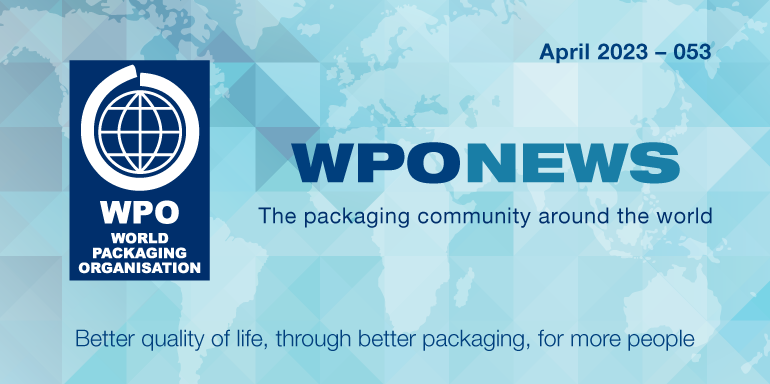|
President’s Word
Let´s embrace packaging!
Pierre Pienaar*
 I am glad to be welcoming you to this the
first edition of WPO News for 2023. I am also so pleased that we are travelling
internationally again, and this year has commenced with a quick acceleration
out of the starting blocks. The WPO Executive team have been out and about, crossing
the globe. In addition, we have also been most active doing webinars and presenting at conferences both physically and virtually. I am glad to be welcoming you to this the
first edition of WPO News for 2023. I am also so pleased that we are travelling
internationally again, and this year has commenced with a quick acceleration
out of the starting blocks. The WPO Executive team have been out and about, crossing
the globe. In addition, we have also been most active doing webinars and presenting at conferences both physically and virtually.
The e-commerce packaging market continues
to grow at an alarming rate, thanks to the boost these past few years. We
cannot be devoid of packaging, we cannot escape, it is
all around us, so let us embrace it!
We have a responsibility and a challenge to
ensure packaging gets better and better in all respects. The WPO continues to
form relationships with other related industries in the pursuance of better
packaging outcomes, holding webinars congresses and
conferences, some physical and some virtual and some in a hybrid format.
Statistics from the Smithers Pira indicate demand for the world packaging industry
will reach $1.05 trillion by 2024. Consumer trends and industry trends for
packaging drive this gigantic growth rate. To understand this phenomenon and
appreciate where it’s heading, it’s necessary to examine the top packaging
industry trends for 2023.
Packaging is an all-encompassing industry
term for the technology and design work going into protecting or enclosing
every sort of product destined for storage, shipping, and sale. Packaging also
takes in the product manufacturer’s marketing efforts.
Every industry has megatrends.
That means overall changes in the marketplace that affect manufacturers’
product placement and presentation. At the forefront of today’s market change
from brick-and-mortar stores to e-commerce is a definite swing in how every
type of product is getting packaged, labelled, and offered for sale. According
to Berlin Packaging, here are the top 5 packaging trends for 2023.
Value Sizes: Inflation, global economic
uncertainty, supply chain disruptions, and rising prices are causing consumers
to change their habits, putting a newfound focus on how packaging sizes can
offer greater affordability and meet consumers’ value-for-money needs. While
smaller packs will continue to dominate in 2023, larger packaging is expected
to grow rapidly through 2025 as global inflation is expected to last for
several years due to a variety of factors.
Smart Packaging: With the ability to do
things like monitor freshness, provide ingredient, nutrient, and health
specifications, display information about a brand or company, or create an
interactive consumer experience, “smart packaging” has a multitude of uses, and
its popularity will only continue to grow.
Inclusive Design: It’s anticipated
that inclusive design will transition from a trend to the norm in 2023 as
consumers increasingly look to support companies and brands that are socially
responsible and demonstrate a commitment to diversity, inclusivity,
and accessibility. This is particularly relevant in beauty care, with nearly
half (47%) of beauty product users saying they shop from brands with diversity
or inclusivity (Mintel).
Enjoyment: The stress and anxiety of the
last few years has driven consumers to look for more enjoyment and excitement
in the products they buy, as fun experiences can provide a sense of escape from
daily stressors. The need for enjoyability is also an
essential part of the value-for-money equation. Berlin identified “retro
resurgence” as one of the top consumer trends of 2023 as shoppers gravitate
toward fun, nostalgic, escapist design experiences.
Carbon Conscious: There is growing
awareness around the role of carbon emissions in the packaging sustainability
equation, with almost 60% of global consumers saying that a reduced carbon
footprint is extremely or quite important to them in a product (GlobalData). Many companies have started incorporating
carbon labelling to demonstrate their environmental commitment and help
consumers make informed purchase decisions.
I would however like to add another trend
that I believe should be given due importance and that is Recycle by Design or
Plastics Circularisation. This is where all those involved in packaging design
should be ensuring that where plastics are used, that the material is able to
be easily recycled.
Sustainable packaging, the green movement
has the momentum to carry itself through 2023 and beyond. Every company that
deals with packaged goods should consider joining the green wave. It’s all
about responsibility through sustainable goods and environmentally friendly
products.
On behalf of all at the WPO, I wish you good
health and safety. Take care and best wishes.
*Pierre Pienaar is President of WPO
 [email protected] [email protected]
 WPO – World Packaging Organization
WPO – World Packaging Organization
 pienaarpierre
pienaarpierre
 @WorldPackOrg1
@WorldPackOrg1
 worldpackagingorg
worldpackagingorg
 World Packaging Organization
World Packaging Organization
From the Editor
Have you ever wondered how technology might impact business in
2023? And how it might connect to the consumer macro-trends?
By Liliam Benzi*
 Some technological resources must advance this year and, besides their adoption, another major challenge will be their application to meet the new consumer behaviors. The following are 10 technological tools and 05 consumer trends that, combined, could leverage the success of companies and businesses. Some technological resources must advance this year and, besides their adoption, another major challenge will be their application to meet the new consumer behaviors. The following are 10 technological tools and 05 consumer trends that, combined, could leverage the success of companies and businesses.
Much is said about Industry 4.0 and digitalization of business, but there is still a certain distrust in the air: "Will technology really influence the course of my company?
The answer is more than obvious: YES! With the entry of 5G technology in 2022 it will be inevitable that 2023 will be marked by a great innovation advance in all sectors and companies, regardless of their size. Metaverse and IoT (Internet of Things) will be mandatory terms in the repertoire of entrepreneurs who want to remain active and competitive.
I recently received a material from a consulting company in Brazil, InfoWorker (www.infoworker.com.br), which emphasizes the importance of companies planning their technological advances based on the novelties and demands of the market.
He took the opportunity to list the 10 trends reported by large companies in the technology sector and that will be essential tools for all companies in 2023. They are:
- Metaverse - Experience in augmented reality, digital twins and all the facilities that Meta's platform offers for the consumer experience. These tools are already being used by companies around the world to increase sales.
- RPA (Robot Process Automation) - The use of robots, that is, software commanded by computer codes,
to reduce processes, increase efficiency and contribute to the flows in all sectors of companies. It is automation transforming information and processes into patterns; algorithms capable of executing programmed actions and learning new functions.
A tool that understands the commands that would be executed by a person. This does not mean replacing human work, but avoiding waste of functions that can be performed in an automated way.
- 5G - Greater speed and interconnectivity is expected by 2023. With this, companies will have to invest in in-house or outsourced innovation to offer the best for their customers.
- Token - Financial transactions are expected to be increasingly secure, as they are protected by encrypted keys. This technology will help reduce costs and secure B2B and B2C relationships.
- ESG in technology - The environmental,
social, and governance agenda has a powerful ally in technology. With technology it is possible to reduce energy consumption and carbon footprint; improve the working environment for employees; and have greater management control.
- Cybersecurity tools - Digital signatures, biometrics, and privacy verification are some of the mechanisms increasingly in demand. With the requirements of the General Law of Data Protection (LGPD), companies will have to adapt to this new way of handling personal data of clients, suppliers and employees.
- Data intelligence - This requirement already exists today and will need to be increasingly improved. Collecting information about the business, the industry, and the consumers, and understanding what they want, helps in sales strategy.
- Cloud Platform - The cloud system ensures security in the deposit of data, and has no space limitation. Authorized people can share information, provided they have access to the Internet.
- Platform engineering - It is a job done by a professional who programs codes that make the link between software and hardware. They involve and maintain all systems, ensuring the security, for example, of applications that are fundamental in the business world.
- Social Business - The loyalty of the relationship with consumers is increasingly valued, and Social Business works with communities of employees, suppliers, and partners, delivering customized solutions.
And how to reconcile these technological trends with the consumer behavior trends predicted by Mintel (www.mintel.com.br) for 2023?
According to the research company, consumer behavior is expected to change and evolve over the next five years according to five global trends:
- Mindset - Consumers will be eager to focus on themselves again and brands can help them rediscover their individuality.
- People power - Brands increasingly need to give a voice to consumers who are investing, co-creating and voting on strategic changes alongside brands.
- Hyper-fatigue - Consumers will cut through information overload and distractions to connect with what really matters to them.
- International localism - Buying locally will be a way for consumers to protect themselves financially, environmentally and psychologically, and feel they are giving back.
- Intentional spending - Factors such as flexibility, durability and sustainability will play increasingly important roles in the consumer value equation.
The combination of these consumption behaviors with the technologies described at the beginning of the text will certainly bring challenges, but also excellent results for those who are attuned and, above all,
open to the new. It is no longer about reaching a certain position in the market, but about being part of a continuous and sustainable evolution and learning process.

*Liliam Benzi is WPO Press & Communication Liaison
Officer and runs its own Communication & Strategy company for the packaging
industry, LDB Comunicação Empresarial.
 [email protected] [email protected]
 (+ 55 11) 99989-1597 (+ 55 11) 99989-1597
 liliambenzi liliambenzi
 liliam-benzi-870b771a liliam-benzi-870b771a
 Liliam Benzi Liliam Benzi
Message from General Secretary
Are you ready to WPO activities in
interpack?
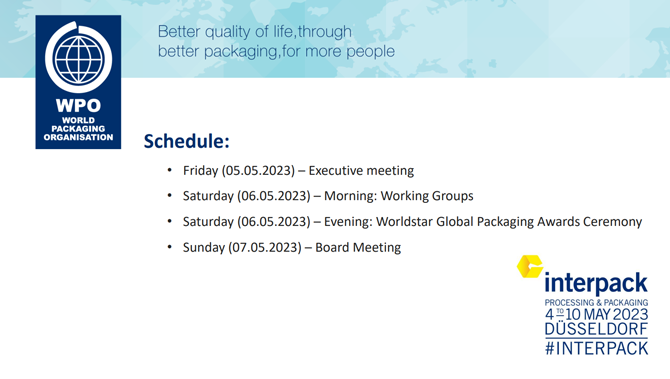
Dear member, we look forward to meeting you
again in Düsseldorf at our next WPO Meeting, which will take place from May 5
to 7, in conjunction with the great packaging and technology trade fair interpack
(May 4-10). We received 59 registrations, and we are amazed at how many of you
we will be able to meet in person at this magnificent event!
As agreed at the last WPO Board Meeting,
this Meeting will only take place in person and unfortunately there is no possibility
for members to join us online. However, if you keep an eye on WPO's social media
(Instagram, Linked In, Facebook and Twitter) you will surely stay in touch with
a bit of what is going on there.
If you would like to nominate someone to be the next president of the
World Packaging Organization, which will be voted on at our next meeting,
please send us the name of your candidate in an e-mail to the Secretariat no
later than one month before the Board Meeting in Düsseldorf, by April 5.
In the picture below you will find our
schedule of events and meetings. In addition, WPO will have a lounge at Hall
6.1, booth /-4 on the first floor (at the Gallery of hall 6), where we will
wait with open doors the visit of all of you!
Besides our awaited WPO Meeting, we have
more news around here. On the WPO website you can now find a complete calendar
listing several packaging events from around the world promoted by our members
and partners; you can also use this tool to promote your own event. If you want
your activities and events to appear in our online calendar, please get in
touch with the Secretariat.
In the link below you can find our
calendar:
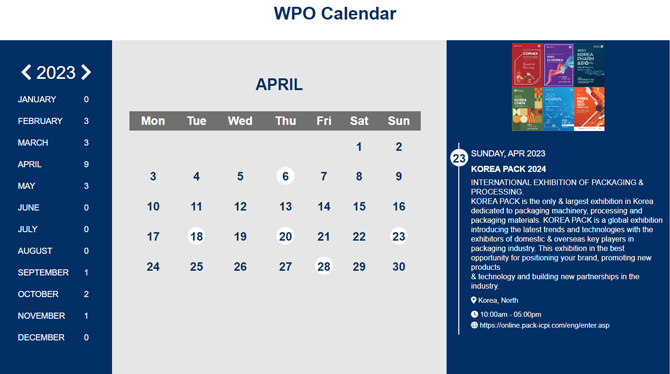
We count on you to have a very
international calendar full of interesting events from the packaging world!
See you in Düsseldorf!
Nathália Antoniazzi
WPO Secretariat
[email protected]
Johannes Bergmair
WPO General Secretary
[email protected]
Around the World
The work of Cavenvase in Venezuela
 WPO member, Cavenvase (Venezuelan Packaging Association – www.cavenvase.org),
among other activities is promoting an online training program in packaging
engineering to incentive theoretical and practical education in the field of
packaging. WPO member, Cavenvase (Venezuelan Packaging Association – www.cavenvase.org),
among other activities is promoting an online training program in packaging
engineering to incentive theoretical and practical education in the field of
packaging.
Cavenvase is a civil association that promotes and defends the Venezuelan
packaging industry and one of its many objectives is to promote knowledge and
development in technology and applications in the world of packaging. That´s
why the organization has been working for almost 7 years to adequate and update
technical staff of Venezuelan enterprises that are dedicated to the manufacture
and use of packaging, with the goal of applying the best practices in the
production of packaging, guaranteeing its quality and encouraging sustainable
packaging design.
The initial training program
begun with short technical courses about packaging design, handling of
materials, the systemic approach of packaging, project management, the
qualities of rigid and flexible plastic containers, as well as the elaboration
of cardboard boxes. However, the program has evolved to industrial
presentations by affiliated companies, in order to promote what is done in
Venezuela and highlight the work of the national industry.
In 2023, Cavenvase achieves a new goal: to offering the first Boot Camp in Venezuela about design,
development and technology in packaging. It is an advanced course of 120 hours
in 16 weeks, with the mission to transmit theoretical and practical knowledge
to the participants, allowing them to develop the skills required in the
design, and packaging development and technology in order to create a
competitive and sustainable packaging project.
Although professional training should be in
the hands of universities and institutions, in Venezuela there is no packaging degree nor specializations in the field. That´s
why Cavenvase sets the standard in the industrial
sector, with a recognized training program, which serves all companies in the
industry, offers discounts for the participation of undergraduate students, and
above all promotes packaging engineering as a profession.
APECI presents activities for 2023 to the
media
On February, the Association of Packaging
Professionals in Côte d’Ivoire (APECI), a WPO member, held a Press Conference
to inform the general public about the recent developments of the Association
and its ambitions in 2023.
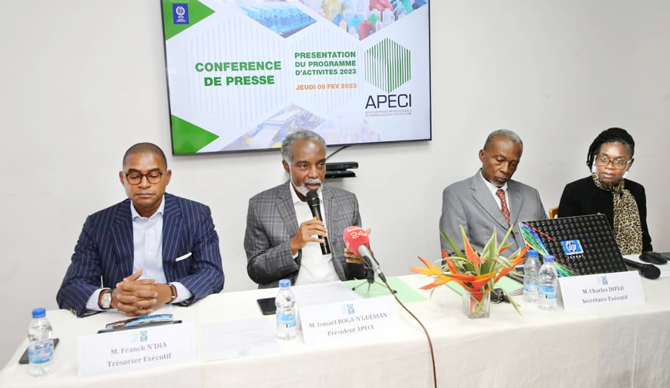
Since its accreditation by the Ministry of
Home Affairs in August 2022, and joining the Board of WPO in October 2022,
APECI aims to be recognized as a resourceful partner to the manufacturers,
users, developers, and consumers of packaging locally and in the
French-speaking West African region.
APECI’s mission is to promote packaging’
knowledge, best practicesa and higher standards of
execution, via training, experience-sharing and local competitions,
contributing to improve the overal quality and
presentation of products ‘Made in Côte d’Ivoire’.
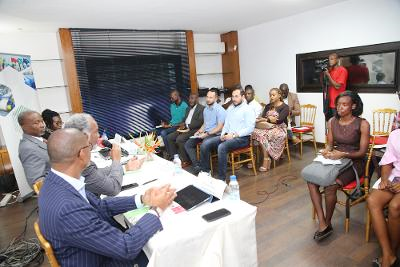 Equally concerned about preserving the
environment, APECI wants to increase awareness about (alternative) sustainable
solutions helping to reduce landfill pollution, by joining hands with paper,
plastic and metal packaging industry Leaders - whose Representatives attended
the event, . Equally concerned about preserving the
environment, APECI wants to increase awareness about (alternative) sustainable
solutions helping to reduce landfill pollution, by joining hands with paper,
plastic and metal packaging industry Leaders - whose Representatives attended
the event, .
Through this ‘official’ coming out, APECI
contributed to make packaging activity a mainstream topic of media
conversations, while showcasing, to potential new Members, the many advantages
of joining the Association.
For more information contact Suzanne Mouelle, Deputy Executive Secretary of APECI, by e-mail [email protected].
A busy 2023 for the National Center for
Packaging in Cuba
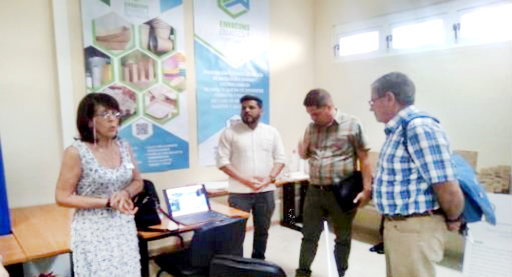
2023
begins with internal training actions at the National Center for Packaging
(CNEE), WPO member in Cuba. With the update on the provisions of the Technical
Regulation for Packaging and Packaging, covered by Resolution 71/2022 of the
Ministry of Industries (MINDUS), the Center organized na event to transmit the new provisions to the
national packaging sector.
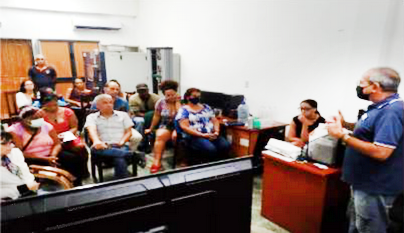 CNEE
was also present in the First Exhibition and Business Fair of the Science and
Technology Park of Havana, together with the Mipyme Envacons and the Cubapel company. On the ocasion, the
Center exposed the training topics it offers and showed the benefits of its
laboratories, equipped with advanced technology, which allows the national packaging
sector to improve the quality of its productions, and open business
opportunities. There i salso na important progress being
made in the implementation of the Policy for the Development of the Packaging
Industry in the country. CNEE
was also present in the First Exhibition and Business Fair of the Science and
Technology Park of Havana, together with the Mipyme Envacons and the Cubapel company. On the ocasion, the
Center exposed the training topics it offers and showed the benefits of its
laboratories, equipped with advanced technology, which allows the national packaging
sector to improve the quality of its productions, and open business
opportunities. There i salso na important progress being
made in the implementation of the Policy for the Development of the Packaging
Industry in the country.
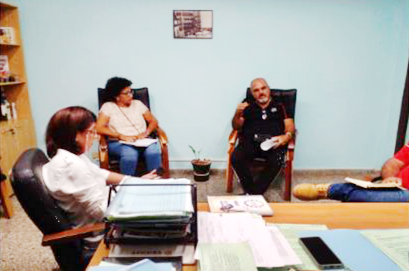 Another
important activity is the participation of CNEE in a research related to egg
trays which aims to propose solutions that respond to the deficit of this highly
demanded packaging in the local market. Directors of the Livestock Business
Management presented their experiences in the province with the use of plastic
trays. CNEE specialists are evaluating the generalization of the production of
this type of trays, as well as the technical requirements that correspond to
the current logistical context in Cuba. Another
important activity is the participation of CNEE in a research related to egg
trays which aims to propose solutions that respond to the deficit of this highly
demanded packaging in the local market. Directors of the Livestock Business
Management presented their experiences in the province with the use of plastic
trays. CNEE specialists are evaluating the generalization of the production of
this type of trays, as well as the technical requirements that correspond to
the current logistical context in Cuba.
One of the objectives of the CNEE
laboratories is to make the most of the potential offered by the installed
equipment. The specialists apply R+D+I to design an attachment that allows the
punching test to be carried out, keeping the dimensions required and provided
by the international standards applied in this research invariable. The CNEE
adds to its portfolio of services, strength tests of resistance to punching in
both flexible and rigid plastic materials.
Training workshops in Greece
Last December, WPO member in Greece,
AGMPM and the Plastics Recyclers Europe held an educational webinar on the
new European regulation 1616/2022 that refers to recycled plastic materials and
objects to be in contact with food. More than 120 industry executives
attended the event
The speakers described the intended
applications (mechanical/physical/chemical recycling, closed collection and
recycling systems etc.), quoted the new terminology, set the implementation
timetable, highlighted the new legislative requirements, provided examples of
declarations, and described the certification process according to the
recognized and well-structured Recyclass System.
Another important event was held in
February, by AGMPM in collaboration with the Dutch Institute for
Sustainable Packaging. The webinar
brought the opportunities and challenges of the packaging material production
industry from the mandatory use of reusable packaging in the European market,
accordingly with the proposal of the new regulation on packaging and packaging
recycling – PPWR.
The event discussed the definition and
categories of reusable packaging, analyzed the operation of closed loops,
presented evaluation tools, analyzed some points of the new European regulation,
and presented good practices from the Netherlands, UK, France and
Germany. It also analyzed some initiatives and practices of using
reusable packaging in France and the EU.
For more information, contact AGMPM
Executive, Dimitris Mandis by e-mail [email protected].
AIP announces the finalists of 2023 PIDA
Award
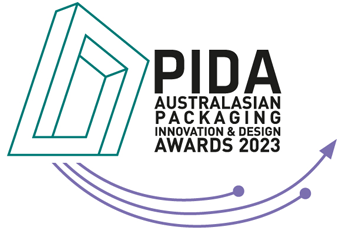 Finalists for the 2023 round of the annual
Australasian Packaging Innovation & Design (PIDA) Awards have been
announced with a significant number of outstanding innovations being recognized
across 11 categories. Finalists for the 2023 round of the annual
Australasian Packaging Innovation & Design (PIDA) Awards have been
announced with a significant number of outstanding innovations being recognized
across 11 categories.
Coordinated by WPO member, Australian
Institute of Packaging (AIP), the PIDA Awards are designed to recognize
companies and individuals who are making a significant difference in their
field across Australia and New Zealand.
The Packaging Innovation & Design of
the Year company awards recognize organizations that have designed innovative
packaging within six categories:
- Food Packaging Design of the Year
- Beverage Packaging Design of the Year
- Health, Beauty & Wellness Packaging
Design of the Year
- Domestic & Household Packaging Design
of the Year
- Labelling & Decoration Design of the Year
- Outside of the Box Design of the Year
There are four special awards also
available:
- Marketing Design of the Year
- Sustainable Packaging Design of the Year
- Industry Packaging Professional of the Year
- Young Packaging Professional of the Year
- ABA Scholarships
The PIDA Awards are also the exclusive
feeder program for Australia and New Zealand for the prestigious WorldStar Packaging Awards (www.worldstar.org) run by WPO. You can
check PIDA´s finalists at http://aipack.com.au/2023-pida-awards-finalists-announed/.
From the Board
Are you ready to WPO meetings during interpack?
If you are a WPO member and will attend interpack (May 04-10 – Düsseldorf – Germany), you have to register to WPO events.
Check the program above and for more information contact WPO Secretariat, Nathália Antoniazzi, by e-mail [email protected].

WPO supports Pakistan to establish a national packaging competition for students
WPO, in collaboration with UNIDO (United Nations Industrial Development Organization – www.unido.org), conducted the first edition of ‘Apple StarPack - Packaging Student Packaging Solution Competition’
in Balochistan, Pakistan, focused in bringing new packaging ideas for the apple sector. Balochistan, the largest province of Pakistan by land area, produces 80% of that country´s apple.
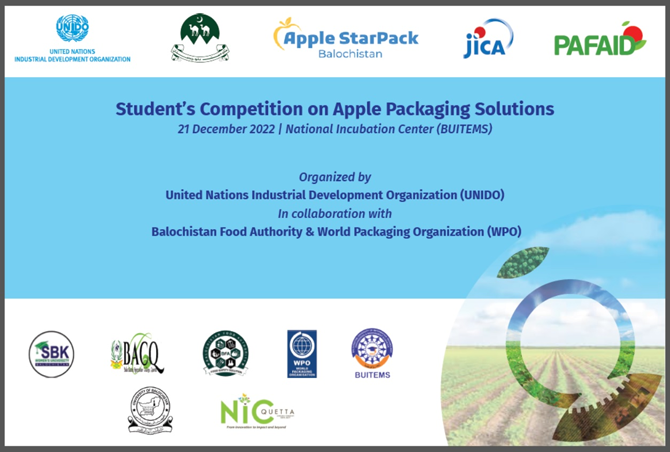
The competition was organized under JICA (Japan International Cooperation Agency) funded “The Project for Agri-food and Agro-industry Development Assistance in Pakistan”. The main objective was to unleash the technical, innovative, creative and entrepreneurial skills of the Balochistan youth, by suggesting solutions in packaging for apples.
Soha Atallah, WPO Vice President of Events, was one of the experts that supported the establishment of this packaging competition and a judge in the competition. She reminds that this activity was part of a project where WPO, with the support of herself, Johannes Bergmair (WPO General Secretary) and Saad Habib (WPO local member), provided an assessment report of the current packaging situation in Pakistan and a Code of Good Practices report, that included some recommendations and international best practices for the packaging of apples.
The students participating in the award were invited to work in three categories:
- Visual - Suggesting new or improved design/art work and improved branding identity of the product.
- Structural - Suggesting new structural packaging
design like new molds or changing the existing packaging
material.
- Save the food - New smart and intelligent packaging to improve the supply of food and prevent its waste.
A selected team of judges evaluated the packaging projects created by 34 students, from four local universities. The winners were presented to packaging industries in Sindh and Punjab in a way to link the students with the industry and to motivate them to release their potential to introduce modern packaging to the Balochistan apple sector. The winners are also be eligible to participate in WorldStar Student, the global packaging competition organized by WPO.
The PAFAID is a four-year Japan International Cooperation Agency (JICA) funded project implemented by UNIDO in
close coordination with the Government of Pakistan. The project aims to improve pilot applications of the compliance capacities and to add value to the cattle meat chain in Khyber Pakhtunkhwa province and to the apple value chain in Balochistan province.
WPO participation in this project is also part of the MOU stablished with UNIDO in 2017 that, in
general terms, aims to fulfil some objectives towards a sustainable industrial development through packaging. Worth remembering that WPO has an Affiliate Member in Pakistan, the Flexible Packaging Association of Converters of Pakistan (Flexpack).
For more information visit www.flexpacpk.com.
‘Global Packaging Design for Recycling Guide’ available in new languages
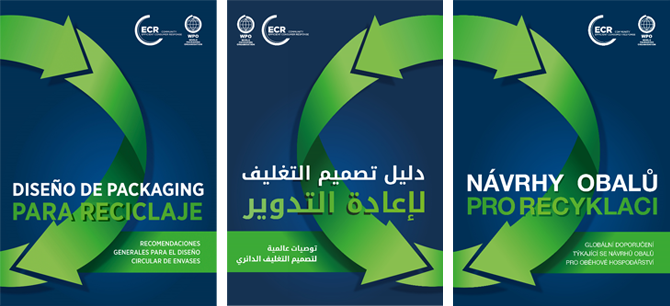
WPO is pleased to announce that the ‘Global Packaging Design for Recycling Guide’ has been translated into 03 additional languages – Arabic, Spanish and Czech - to help even more packaging technologists to design out waste at the start.
The Guide is a starting point to understand Best Practice examples, using state-of-the-art technology that can then be applied and tailored to suit the recovery and recyclability capabilities and infrastructure on a regional and local level.
These latest translations have been developed in collaboration with country based WPO Members. WPO thanks for the contribution of Ayman Sbeih, Chairman of the Palestinian Federation of Paper & Packaging Industries (PFPPI); Silvio Colombo, from the Argentine Packaging Institute (IAE) and Mariana Soto Urzúa from the Packaging Centre of Chile
(CENEM); and Iva Werbynska, Managing Director, Syba in partnership with Tomas Martoch, Senior Manager, ECR Community.
The new translations are in addition to English, German, Georgian and Hungarian and are available for free to
download on the WPO website. https://www.worldpackaging.org/wpo/45/.
The Portuguese version is about to be launch by WPO member, ABRE (Brazilian Packaging Association).
WPO speakers at 2023 AIP Australasian Packaging Conference
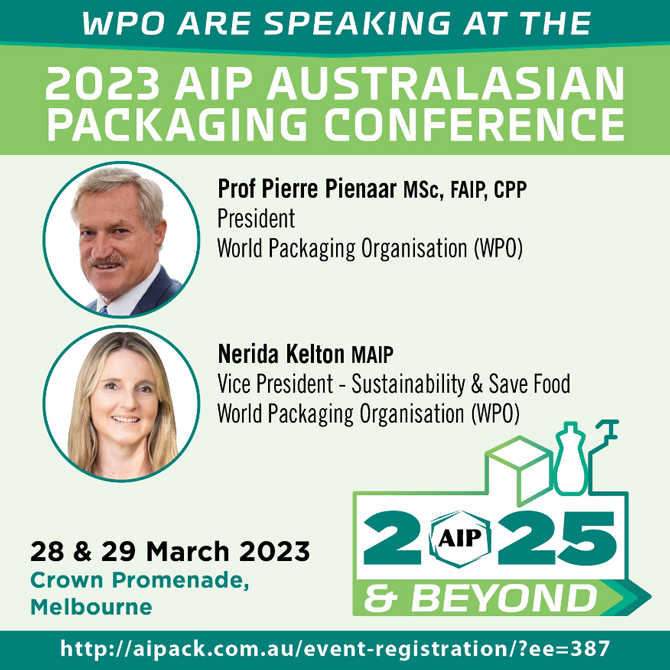
WPO President, Pierre Pienaar and Vice President Sustainability & Save Food, Nerida Kelton, spoke at the 2023 AIP Australasian Packaging Conference, on March. The event counted with 68 speakers across the two days and covered a broad range of topics relating to the theme ‘2025 &
BEYOND’.
The Conference looked at how the various industries are heading towards the 2025 National Packaging Targets and covered topics such as refusal, reduction, reuse, recycle and circularity. The speakers will also look at what is beyond 2025 and what the industry needs to do to design out waste, eliminate problematic materials, reduce single use plastic and ensure that we are capable of collecting, sorting, recovering and recycling all the materials and packaging formats in Australia and New Zealand.
WorldStar
WPO confirms the WorldStar Award Gala Ceremony during interpack
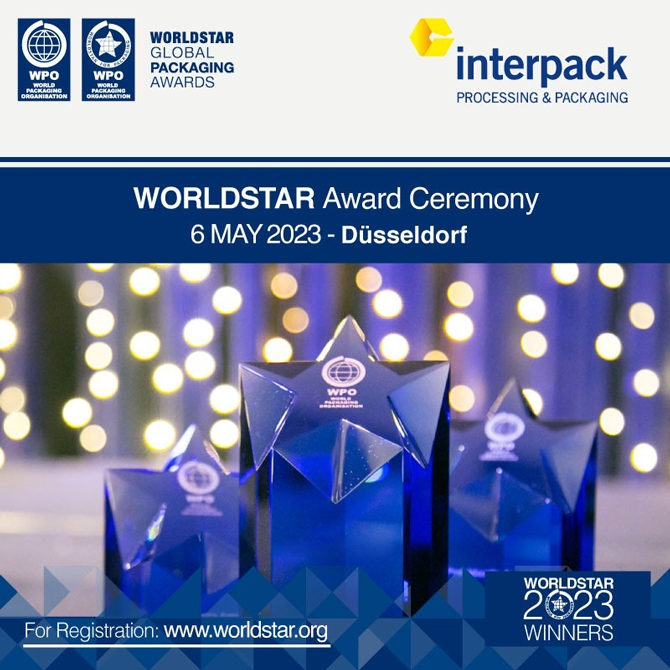
WPO is proud to confirm that the 228
winners of the WorldStar 2023 will be presented
during a Gala Ceremony to take place on May 06, during interpack (May 04-10), in Düsseldorf (Germany). In a record
edition, the Award registered 488 entries, from 41 countries. In the previous
edition (2022) there were 440 competitors from 37 countries.
In the 2023 edition, the top five most
awarded countries are: Japan - 26; Australia & New Zealand – 19, India & Germany – 18; Turkey – 14;
and Austria – 13. The 2023 edition is also special due to the introduction of
two new main Categories - Gift Packaging and Digital Packaging - and one new
Special Category - Accessible Packaging.
The complete list of winners is available
both in WorldStar or WPO webpages – www.worldstar.org or www.worldpackaging.org.
The registration to participate in the Gala Ceremony is open to the packaging
professionals; register now using the link www.worldstar.org/registration.
Packages eligible for WorldStar Awards are those that have already received a national or regional packaging
award from a packaging competition that is recognized by WPO during the last 2
years. “As always, our aim is to promote packaging innovation in various
sectors, proving that a good package can be an essential solution to many of
the modern problems, especially sustainability, food waste and extending shelf
life of food and agricultural products. That´s why we
encourage all the companies from around the world to benefit from this global
opportunity to promote their packaging by competing with the best of the best
packaging innovation on a global scale”, explains Soha Atallah.
For general enquiries on WorldStar contact Soha Atallah by e-mail [email protected].
Sustainability
WPO Position Paper ‘Sustainability perspectives across the globe´
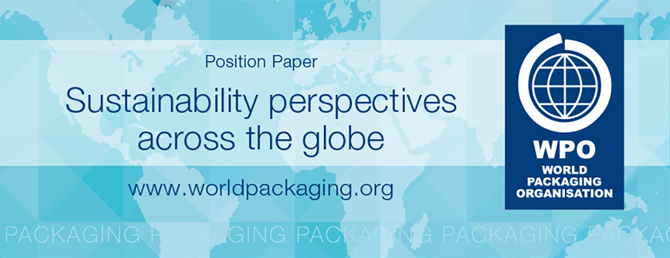
As a part of the recent Sustainability & Save Food Working group meeting, 21 countries, including Finland, Austria, Italy, Poland, Ireland, Wales, Scotland, England, United States of America, South Africa, Ghana, Kenya, Vietnam, United Arab Emirates, Israel, India, China, the Philippines, Thailand, Australia and New Zealand, came together to discuss the latest trends, barriers, challenges and initiatives within their country and region.
What is interesting is that the sentiment is the same in every corner of the globe,
in that, whilst a lot is happening in circular and sustainable design, a lot more needs to be done to realistically be able to meet packaging and waste targets globally, regionally and locally.
The common themes look at designing out waste at the start, eliminating problematic materials, phasing out single use plastics, incorporating more recycled content into products, and ensuring that the materials and packaging that is put out into the market is in fact capable of being collected, sorted, recycled, reprocessed and put back into other solution.
WPO Members Sustainability Programs & Initiatives
Key initiatives and programs that are being developed across the WPO member countries include:
- Moving soft plastics and flexible packaging to mono material formats that can be recycled and/or reprocessed through Advanced Recycling facilities, Kerbside collection or Return to Store programs.
- Developing Extended Producer Responsibility (EPR) Regulations.
- Establishing Plastics Pacts and roadmaps for the country or region.
- Creating Deposit Return Schemes/Container Deposit Schemes.
- Building facilities for recycled content.
- Establishing Single Use Plastics (SUP) Regulations.
- Improving Materials Recovery Facility (MRF) capabilities and technologies.
- Building Advanced/Chemical Recycling facilities.
- Developing Consumer Education for Recycling.
- Creating on-pack labelling programs to help guide consumers to recycle correctly.
WPO Members strive for collaboration and knowledge sharing
With so much happening across the world, WPO offers a unique platform to be able to bring together developed and developing countries together in one room to regularly and openly discuss what is happening globally, regionally and locally.
WPO recognises that no country can do this by themselves. By sharing knowledge, on not only the positive sides of sustainability, but also openly discussing challenges, barriers and learnings that have come from some of these programs, will enable all to have a clearer view on what needs to be done in the different regions to meet global,
regional and local packaging and waste targets.
Everyone has a role to play to ensure that packaging is being designed to provide the lowest environmental impacts wherever possible and that the materials and formats are fit-for-purpose, functional and truly capable of being collected, sorted, recycled and reprocessed in the country that it is sold in.
The Position Paper was coordinated by WPO Vice President Sustainability & Save Food, Nerida Kelton. For more information send an e-mail to [email protected].
Special Article
Australia working hard to Fight Food Waste
By Nerida Kelton*
After attending the two-day National Food
Waste Summit, which was coordinated by Stop Food Waste Australia and Fight Food
Waste Ltd, I went home inspired by how far Australia has come in the last few
years. Not even a pandemic has stopped the momentum that is underway across all
corners of the food value chain.
I loathe to repeat myself but the Food Loss
& Waste statistics in this country are just staggering and to put it in to
perspective the Melbourne Cricket Ground can be filled 10x times over with the
7.6 million tonnes dumped every single year. Interestingly many people in attendance
believe that these statistics are grossly underestimated against what we really
waste.
Sadly, by comparison to most developed
countries Australia wastes more per capita than most. 2.5 million tonnes of
food are in fact wasted in our households ever year, which equates to 1 in 5
bags of groceries. Whilst this is not a statistic that we should be proud of
the National Food Waste Summit did shine the spotlight on some of the brilliant
work that is being done by some inspiring Waste Warriors.
Whether it is through valorisation and
upcycling, food rescue, research or consumer behavioural campaigns the entire
value chain is working hard to meet the 2030 National Food Waste Targets. Whilst
there is a lot more to do, I certainly was inspired by what I heard and saw.
Upcyling
There was a lot of discussion around
upcycling of food that is usually ploughed back into field, rejected by
supermarkets or lost in various stages of the value chain. Upcycling food is
another way to look at reuse whereby waste by-products are transformed into new
commercial products. The new products prevent food waste, lower environmental impacts
and could potentially help feed a growing population. It is about doing more
with less and elevating all food to its highest and best possible use.
Companies such as Good & Fugly, I am
Grounded and Nutri V are just three examples of innovative upcycling.
Good & Fugly
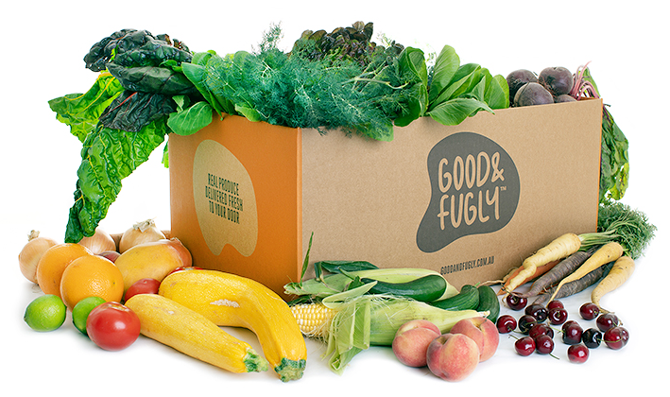
Recognising that 25% of all produce grown
in Australia never leaves the farmgate and is potentially ploughed back into
fields, the innovative company behind Good & Fugly finds a new home and use
for all of the perfectly edible, yet imperfect, rejected fresh produce that no
one else wants. The fruit and vegetable boxes are made up of the weird, wonky,
misshapen misfits of the fresh produce world and are sold via e-commerce into
our homes. Consumers that buy Good & Fugly boxes are helping farmers to
receive a new commercial stream for produce that they can’t sell to the
retailers and a flow on is that less food is ploughed back into field and
wasted.
I am Grounded
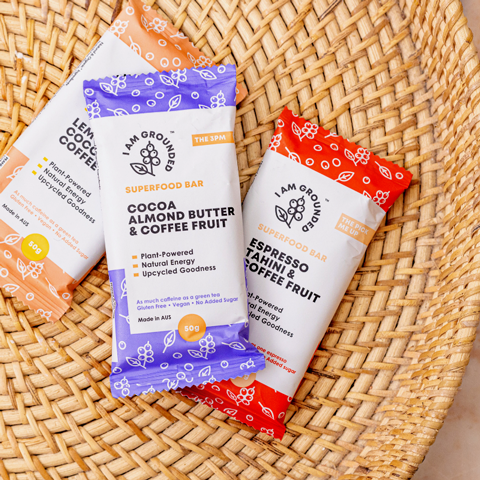 With 3 billion cups of coffee being
consumed every day across the globe the coffee industry does have unintended
waste on the farm and through processing. As coffee is a fruit, the cherry is
picked, washed, sorted, and de-pulped in order to retrieve the small seeds it
encompasses to make the end product. Sadly, the remaining pulp and skin of the
coffee fruit is discarded and wasted. With 3 billion cups of coffee being
consumed every day across the globe the coffee industry does have unintended
waste on the farm and through processing. As coffee is a fruit, the cherry is
picked, washed, sorted, and de-pulped in order to retrieve the small seeds it
encompasses to make the end product. Sadly, the remaining pulp and skin of the
coffee fruit is discarded and wasted.
On a global scale, the coffee industry
produces approximately 10 billion kilos of coffee fruit waste annually, which
equates to approximately 16.6 million tonnes of CO2 or 0.2% of the world's CO2
emissions.
This is where I am Grounded comes in. The
brand has developed an innovative healthy snack that rescues 70 grams of coffee
fruit for every bar. An added benefit is that coffee fruit offers antioxidants,
natural caffeine and is a nootropic that aids in mood and brain function. The
antioxidants in the coffee fruit are higher than Acai. The owners of I am Grounded
are on a mission to create systemic change in coffee by adding value to the
fruit and creating a commercial solution for the waste.
Nutri V Goodies – minimising vegetable
waste on farms
Nutri V is a collaboration between Fresh
Select, a leading fresh produce supplier with over 60 years of Australian
farming history and Australia’s national science agency, CSIRO. Recognising
that there is high vegetable waste in production, as well as poor vegetable
consumption by consumers, the process uses the entire plant, including stalks
and leaves, where many of the nutrients are found.
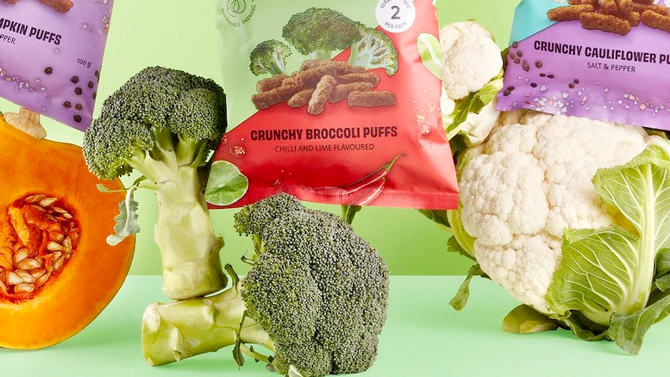
Nutri V takes 100% Australian grown
vegetables grown on farms using sustainable farming practices and turns them
into nutrient dense, fibre-rich and protein fuelled vegetable powders. The
vegetables are harvested, dehydrated and packed as soon as possible to ensure
maximum nutrient retention. The finished product range is a healthy snack that not
only captures food loss but also creates a commercial solution.
National Food Donation Tax Incentive
One of the panel discussions brought
together Foodbank, Oz Harvest and FoodShare; three of the leading food rescue organisations
in the country. The discussion focussed on the call of action to develop a National
Food Donation Tax Incentive with the release of a report outlining its design
and implementation analysis.
In 2020, KPMG released a report into boosting food relief through the tax
system, and since then has been consulting with industry stakeholders to
determine the feasibility and potential effectiveness of the proposed tax
incentive.
The report recommends a two-tiered tax
incentive based on the ability to offset a percentage of costs related to food
donations from taxable income, with the aim to encourage food producers to
donate surplus product to food relief rather than sending it to landfill.
During the summit Brianna Casey, the Chief Executive Officer of Foodbank
Australia mentioned that so many farmers and businesses are already donating to
food rescue organisations and they should be incentivised to not dump food, or
plough it back into field.
Experiences in the US, France, Canada and
the Netherlands show that tax incentives are the most effective way to increase
the redirection of food surplus to food relief.
Foodbank is inviting everyone to advocate
for the adoption of this tax incentive. Please read the letter of support and pledge
your organisation’s support. They are aiming to get more than 100 food industry
signatories.
Australian Food Pact
A consistent theme during the two days was
around the Australian
Food Pact which is a powerful partnership of organisations who
operate along the farm-to-fork food supply chain and represents a major step
towards the country reaching its food waste reduction goal of 50% going to
landfill by 2030.

The Australian Food Pact is a voluntary agreement
that follows a proven international way of reducing food waste, focusing on
prevention, reuse (donation), and food chain transformation and innovation.
The Pact has four work programs:
- Target 1: Making the most of every scrap –
by donating any surplus food or transforming it to create new business or
societal value.
- Target 2: Designing and sourcing more
sustainable products in the first place, with waste prevention in mind.
- Target 3: Producing more with less – making
farming and manufacturing more efficient. Encouraging the whole supply chain to
collaborate.
- Target 4: Raising awareness and changing
the culture around food waste in businesses. Helping consumers to reduce food
waste.
The AIP is pleased that the Institute has recently
become a Supporting Signatory to the Australian Food Pact.
Consumer Behaviour & Perceptions
The Fight Food Waste Cooperative Research
Centre has a number of research projects that are focussed on consumer
behaviour and perceptions, and it was great to learn more about the findings
from the insight reports and key interventions needed in households.
One such research project that was
discussed was the Reducing food waste with better design. Consumer perceptions
of the role of packaging in reducing food waste insights report. This report
has been designed to understand consumer’s perceptions of food waste with a
view to finding opportunities for packaging to reduce food loss and waste.
The results show that there are highly complex issues and many contributing
factors to food waste in the household. Improved packaging and labelling can
play a role in reducing household food waste.
On pack information could be provided that allows consumers to make informed
decisions on storage and reduce waste. However, as consumers become familiar
with products, they rarely read the packaging so this would have to be on new products.
Date labelling is reasonably well
understood but consumers would like to see some consistency and certainty surrounding how it is implemented.
The quality of packaging materials should
match the storage and transportation requirements. Some packaging contributes
to food waste as it is not fit for purpose. This is especially in foods such as
salads which use ‘flimsy’ plastics. The insights report will be followed by
additional research.
A second report that was discussed was the
landmark Designing effective interventions to reduce household food waste
research that is the most comprehensive of its kind ever conducted in
Australia.
The project highlights the increasing need
for a major nationwide behaviour change campaign centred on helping consumers
reduce the amount of food they waste.
Key findings in the report include:
- The biggest way for households to save
money is by reducing wasted meat and fresh vegetables.
- Families with young children, particularly
when both adults work full-time, have the largest opportunity to reduce food
waste.
- To reduce food waste in the home, the key
areas to focus on are:
- Preparing appropriate amounts of food
- Planning for changes in meal plans
- Eating leftovers
- Purchasing appropriate amounts
The report recognised that simply consumers
having a better understanding around these interventions is
not sufficient. There is also a need to develop guidelines that will be
based on behavioural insights and behaviour change theory to
prioritise household food waste interventions for each of the
identified audience groups around criteria such as potential impact,
likely uptake, and ease of adoption.
Evaluation guidelines will also be
developed to assist in providing a common approach for evaluating
the effect of the interventions.
Use it Up Tape for Households
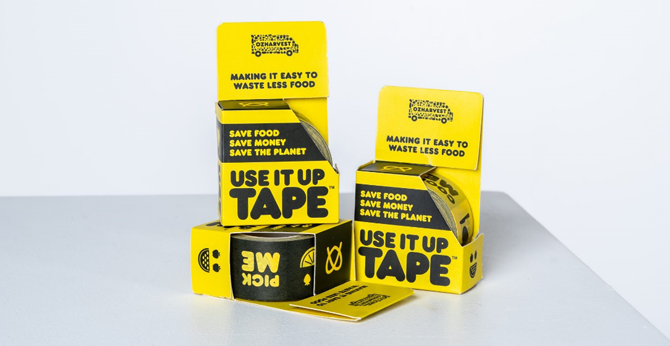
Oz Harvest, a food recuse organisation, has
also developed ‘Use it Up’ Tape that is designed to encourage consumers to use
up food, before buying more. The ‘Use it Up’ tape has been developed to make it
easy to identify what foods needs using up in your refrigerator, freezer or pantry.
You simply mark out an area where you can place food that needs using up, or
you can use the tape on individual containers. Consumer Behaviour determines that
once you can see what needs to be used you are more likely to use it up. Oz Harvest
have also developed Use it Up recipes to make it easier for Australians to
waste less food in the household. The Use it Up tape is an extremely innovative
solution that we should all start using in our own homes. I have ordered my
tape to trial this intervention.
National Consumer Education Campaign is the
next step
One thing that was discussed continuously
across the two-day summit was that to realistically halve food waste by 50%
that goes to landfill by 2023 we will require a national consumer education
campaign. This campaign will require major capital from government, industry
and individuals but will enable significant shifts in consumer behaviours that
will minimise food waste in the households. This is the missing piece of the
puzzle in the fight to stop wasting food in Australia and we all need to raise
our collective voices to ensure that the funding is made available.
The National Food Waste Summit was an
invigorating event that showcased not only programs and initiatives that are
happening across the country right now, but also new innovations and research
that is going to be available soon. I can’t wait to see the next steps in our
roadmap to halve food waste by 2030.
Everyone has a role to play, and we can all
take steps to lower our own food waste footprint. Please consider what you can do
differently and help us to meet the 2030 National Food Waste Target.
*Nerida Kelton is Executive Director of AIP
(Australian Institute of Packaging), a WPO member, and WPO Vice President Sustainability
& Save Food. To contact her, send an e-mail to [email protected].
|
